What is Inductive Reasoning?
Inductive reasoning is a form of logical reasoning where conclusions are drawn based on observed patterns or trends.
Unlike deductive reasoning, which relies on general principles to reach specific conclusions, inductive reasoning involves making generalizations based on specific observations.
In data science, inductive reasoning plays a crucial role in analyzing data and extracting valuable insights.
Characteristics of Inductive Reasoning
Inductive reasoning, an essential pillar of logical thinking, boasts some fascinating characteristics. Let's delve into some of these features:
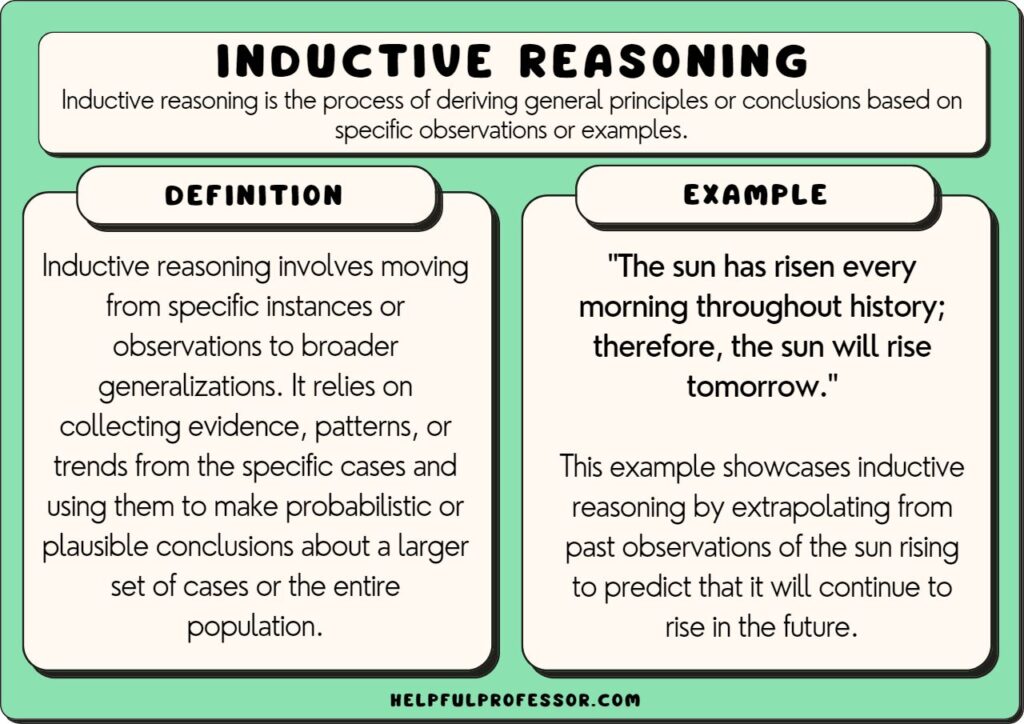
Patterns Are Key
A staple of inductive reasoning is identifying patterns in specific instances and extrapolating to broader generalizations. This process is highly reliant on observable trends and patterns.
It's Probabilistic
Contrary to deductive reasoning, conclusions drawn from inductive reasoning aren't absolute. They're probabilistic, meaning that they're likely true, given the information at hand.
Based on Empirical Evidence
Inductive reasoning thrives on empirical evidence. Gathering and analyzing evidence is an integral part of this reasoning process, guiding the formulation of generalized conclusions.
Can Formulate Hypotheses
One of the strengths of inductive reasoning lies in its ability to formulate hypotheses based on observed phenomena. It's a crucial tool for thinkers across various fields, from scientists to detectives.
It's Self-correcting
Inductive reasoning is self-correcting. New observations or data could lead to modifications of existing generalizations, making the reasoning process adaptative and evolving over time.
Inductive Reasoning in Data Science
Inductive reasoning plays a vital role in data science, powering insights and breakthroughs. Let's explore how it's used in this field:
Hypothesis Generation
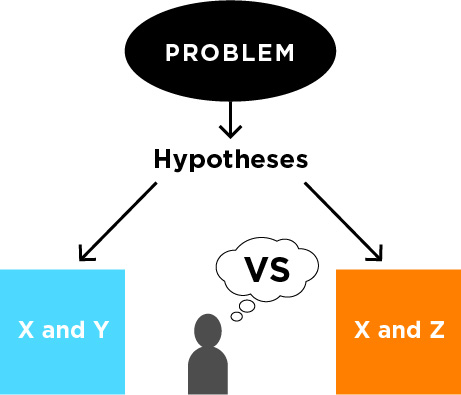
Data scientists often employ inductive reasoning to create hypotheses from observed data patterns.
This ensures that potential theories are grounded in real-world evidence and improves their likelihood of being accurate.
Model Selection
Inductive reasoning aids data scientists in selecting the most suitable models for their analyses.
By identifying patterns in data, it helps in determining the most appropriate model to use for making predictions or studying relationships between variables.
Outlier Detection
Detecting outliers and anomalies in data is crucial for data scientists.
Inductive reasoning helps spot unusual data patterns, guiding the process of identifying and addressing outliers to improve the quality of the analysis.
Feature Engineering

Inductive reasoning is a handy tool for the crucial task of feature engineering.
It empowers data scientists to recognize relevant patterns that inform the selection and creation of variables that contribute to the effectiveness of predictive models.
Continuous Improvement
Data science is an iterative process, constantly evolving with new information. Inductive reasoning, being self-correcting, helps data scientists refine their models and analyses, ensuring they remain accurate and relevant over time.
Examples of Inductive Reasoning
Inductive reasoning involves drawing general conclusions from specific observations or instances. Here are five examples of inductive reasoning:
- Scientific Hypotheses: Scientists often use inductive reasoning to formulate hypotheses based on observed patterns or behaviors, later testing their validity through experimentation.
- Weather Predictions: Meteorologists observe weather patterns and data over time to make predictions about future weather conditions, using inductive reasoning to draw conclusions.
- Consumer Behavior: Marketers study customer purchasing habits, preferences, and feedback to develop trends and strategies, relying on inductive reasoning to identify potential patterns.
- Stereotyping: While not always accurate, people often form stereotypes based on observed patterns within a group, generalizing these attributes to the whole group.
- Learning From Experience: Individuals frequently use inductive reasoning to learn from their experiences, making decisions based on past outcomes to form expectations and navigate future situations.
Techniques for Analyzing Inductive Reasoning
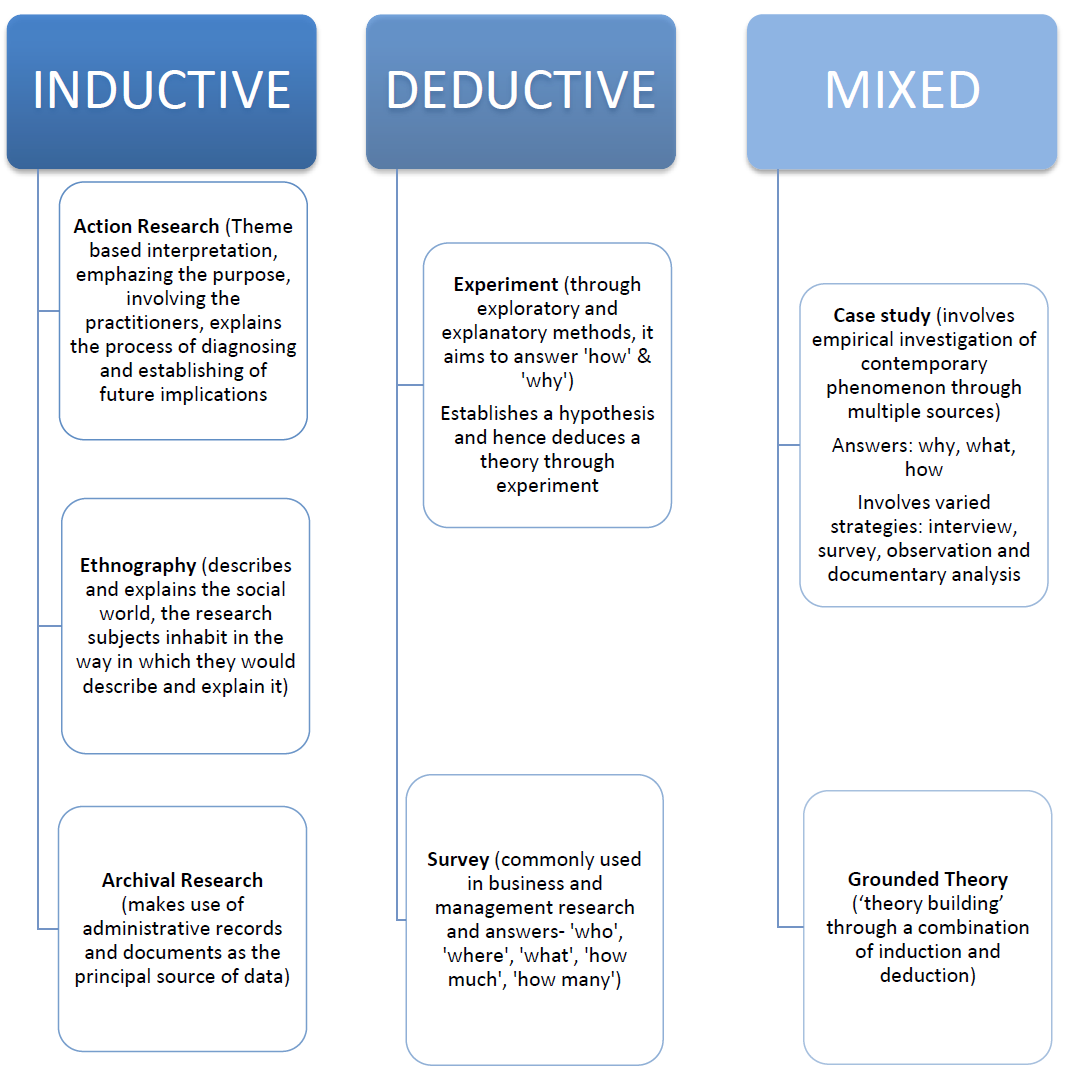
- Identifying Patterns: The first step in analyzing inductive reasoning is to identify patterns. Look for recurring themes, ideas, or trends in the information you're evaluating.
Noticing these patterns can lead you towards logical conclusions.
- Evaluating the Strength of Arguments: Examine the strength of the arguments made. Inductive reasoning relies on probability, so ensure that the claims made are supported by substantial evidence and logical connections.
- Considering Multiple Perspectives: Open your mind to different viewpoints and interpretations. By considering multiple perspectives, you can expand the scope of your analysis and identify potential gaps or biases in the reasoning process.
- Using Counterexamples: Counterexamples can be effective in analyzing inductive reasoning. If an argument's conclusion can be falsified through a single counterexample, it may indicate that the inductive reasoning is flawed.
- Revising Conclusions: Remember that inductive reasoning can often lead to revisable conclusions. Be prepared to reassess and modify your conclusions as new information becomes available. This is a normal part of the process and demonstrates critical thinking.
Inductive Reasoning vs Deductive Reasoning
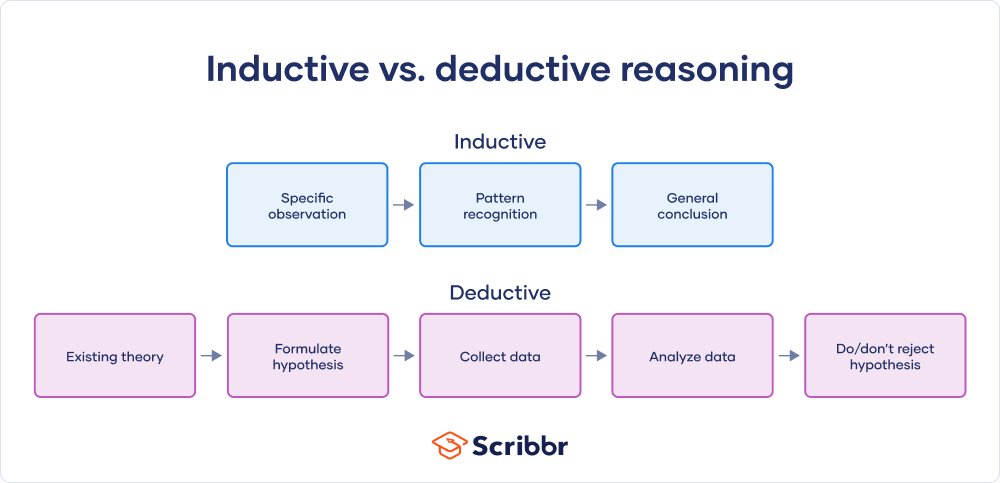
Inductive and deductive reasoning are two different approaches to logical thinking. Here's a comparison of these reasoning methods:
- Basis of Reasoning: Inductive reasoning involves forming general conclusions based on specific observations, while deductive reasoning starts with general principles and applies them to individual cases.
- Degree of Certainty: Inductive reasoning often leads to probable conclusions, whereas deductive reasoning, when correctly applied, can yield definitive conclusions.
- Research and Discovery: Inductive reasoning is commonly used in research to identify patterns and formulate hypotheses, while deductive reasoning is used to test these hypotheses through the application of general principles.
- Argument Structure: In inductive reasoning, the argument's structure is based on observed instances. In deductive reasoning, the argument's structure is formed by applying a general rule or principle to a specific case.
- Approach to Problem Solving: Inductive reasoning uses a bottom-up approach, moving from specific instances to broader generalizations. Deductive reasoning employs a top-down approach, starting with general principles and applying them to individual situations.
Benefits and Challenges of Inductive Reasoning
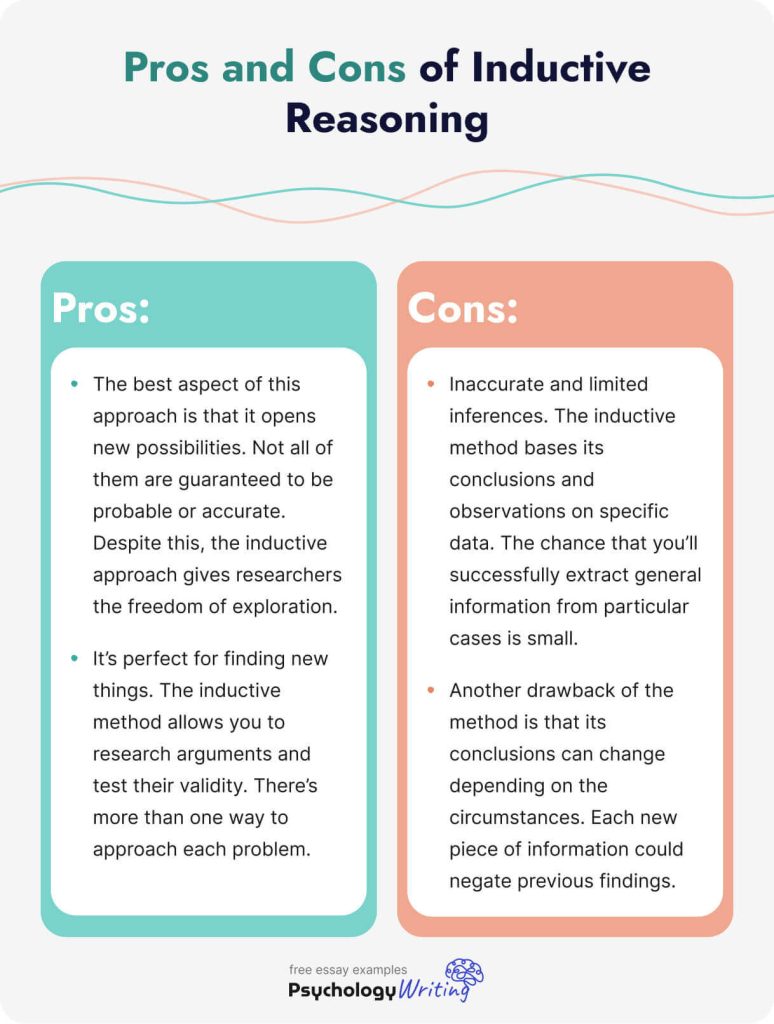
Inductive reasoning, while amazingly useful, comes with both benefits and challenges. Let's delve into its various aspects:
Flexibility and Adaptability
Inductive reasoning is flexible and adaptable, allowing thinkers to adjust their conclusions as new information emerges.
This quality proves invaluable in many fields, including research, data analysis, and investigative work.
Encourages Creative Thinking
The inductive process encourages a curious and creative mindset, prompting individuals to explore various possibilities and consider different perspectives when observing patterns and forming generalizations.
Facilitates Hypothesis Generation
Inductive reasoning is excellent for forming hypotheses, providing a solid basis for researchers to design experiments and examine relationships between different variables or aspects of a phenomenon.
Incomplete or Biased Data
The quality of inductive reasoning relies heavily on the data being analyzed. Incomplete or biased data could lead to erroneous conclusions, underscoring the importance of robust data collection, and analysis methods.
Uncertainty of Conclusions
Since inductive reasoning deals with probabilities rather than absolutes, its conclusions are inherently subject to uncertainty, with a potential risk of inaccuracies.
This makes deductive reasoning a more appealing option when pursuing definitive conclusions.
Frequently Asked Questions (FAQs)
What is Inductive Reasoning in machine learning?
Inductive Reasoning is a type of machine learning that uses patterns and observations to form general rules.
It involves generating new knowledge from observations rather than starting with a hypothesis.
What is inductive logic?
Inductive logic is another term for inductive reasoning. It's the process of using specific evidence to form general rules or predictions.
What is inductive approach?
An inductive approach is a research method where theories and hypotheses are developed from observations and empirical evidence.
It involves analyzing specific instances to form general principles or theories, often used in qualitative research to explore phenomena and generate new insights.
How does Inductive Reasoning work in machine learning?
In Inductive Reasoning, the machine learning model observes examples where it receives input and output pairs, and it identifies patterns among them to predict future output given new input based on the learned knowledge.
What are some examples of Inductive Reasoning in machine learning?
Inductive Reasoning is used in various areas of machine learning, like classification tasks, regression analysis, clustering, and decision trees.
It's applied where large amounts of data are available to learn from.
What are the advantages of using Inductive Reasoning in machine learning?
Inductive Reasoning allows the machine to learn by itself without introducing biases. It's useful in scenarios where it's not feasible to create a hypothesis or rules manually.
It's flexible and can adapt to new data quickly.
What are the limitations of Inductive Reasoning in machine learning?
One major limitation of Inductive Reasoning is that it does not guarantee the learned rules will work for all possible inputs, leading to overfitting and underfitting.
To overcome these limitations, researchers try to tune various hyperparameters of the model to get the desired accuracy.


